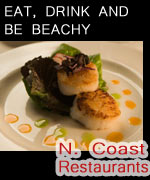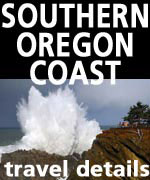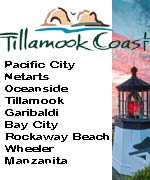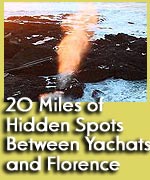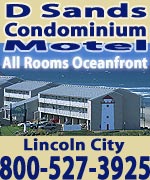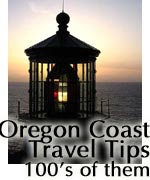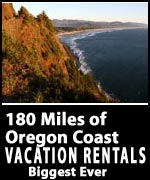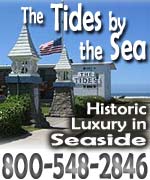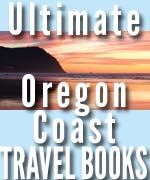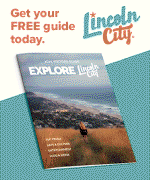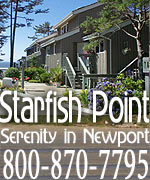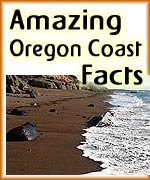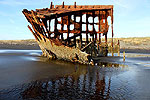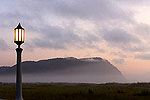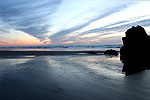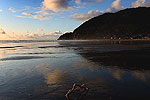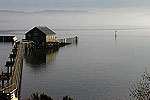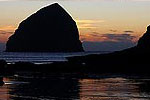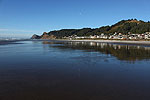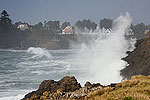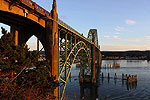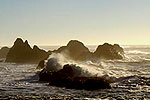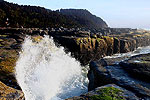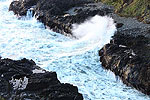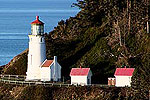 |
Published 04/06/09
Dangers of Ocean Plastic Subject of Oregon and Coast Lectures
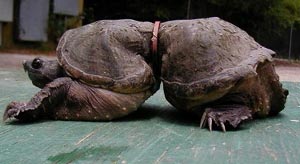 |
| A snapping turtle was caught in a piece of plastic while young - and grew around it. (photo Zan Dubin) |
By Zan Dubin
(Oregon Coast) - The giant islands of plastic waste in the world's oceans are the subject of a series of free lectures in Portland, Salem and Newport this month.
Dr. Marcus Eriksen and Anna Cummins of California's Algalita Marine Research Foundation (AMRF) are delivering these lectures to educators, policymakers and the public along the West Coast. They are also bicycling some 2,000 miles to these programs, in a quest to end the age of disposable plastics.
Eriksen and Cummins will show photographs from a decade of research at sea: a dead turtle trapped in a plastic lawn chair, an albatross carcass bulging with tooth brushes and bottle tops, and the plastic-filled stomach contents of fish commonly served in restaurants.
The Oregon JUNKride 2009 presentations begin in Portland on April 21 at Keen Footwear.
On April 22, the program takes place at Tokyo International University of America in Salem, Oregon.
April 27 finds them on the Oregon coast at the Hatfield Marine Science Center in Newport.
“In ten years, the amount of trash floating out to sea has doubled,” says Eriksen, AMRF director of research and education. “We’ve got to find a better way soon. We’re already finding plastic waste in the food we eat.”
AMRF, a nonprofit organization near Los Angeles, was founded by Captain Charles Moore, who first put the plastic soup problem on the map and spoke at this year’s TED Conference.
“Moore’s work made it clear that plastic pollution is having a major impact on our marine environment,” says world renowned biologist Daniel Pauly, former director of the Fisheries Centre at the University of British Columbia. “I commend Marcus Eriksen and Anna Cummins for raising broader awareness of this grave problem with JUNKride.”
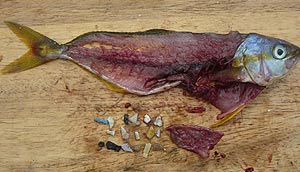 |
| Fish with plastic particles taken from its stomach (photo Dubin) |
Eriksen and Cummins, AMRF’s education advisor, launched JUNKride 2009 at the Vancouver Aquarium, then headed south for lectures on the environmental and human health impacts of plastic marine pollution. They’re stopping at universities, schools, other aquariums and the like.
AMRF has focused its research on the North Pacific Gyre, a swirling vortex of ocean currents twice the size of the United States, in which a vast plastic buildup, or soup, is rapidly growing.
"We haven’t seen the worst of it and have yet to fully delineate the area,” says Moore. “This summer’s research voyage seeks to validate models that show the highest levels of marine debris are northwest of Hawaii near the International Date Line."
Eriksen, a Gulf War vet, sailed through the gyre from Long Beach to Hawaii last summer aboard Algalita’s JUNKraft made of 15,000 plastic bottles. For JUNKride, he and Cummins will hand out 100 jars of debris-filled ocean water collected on the trip.
Says Cummins: “We hope to educate a new generation by going to schools and encouraging students to think about where exactly “away is” in our throwaway society. We must start seeing the link between consumerism and long-term environmental impact.”
Scientists estimate that nearly half of all seabird and many marine mammal species are impacted by plastic waste, either from ingestion, entanglement or strangulation. The human health risk of the plastic ocean plague is growing. Aboard JUNKraft, Eriksen collected rainbow runner fish, commonly served in restaurants, and found plastic particles in their stomachs.
“Plastics at sea are possible carriers for chemicals like DDT, PCBs and other pollutants, such as oil from our cars,” Eriksen says. “These are known human carcinogens and endocrine disrupters. Our research is examining whether they are released into fish that ingest plastic and wind up on our dinner plates.”
In fact, Cummins is testing her blood for the dangerous chemicals to determine if a correlation can be made between meal time and maritime plastics. This will be documented for “Synthetic Me,” a new outreach project.
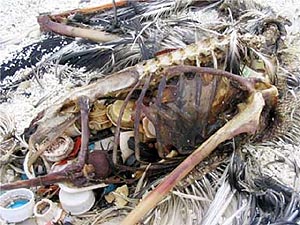 |
| Plastic material bulging from a carcass of an albatross (photo Dubin) |
Eriksen and Cummins say there is no way to clean up the North Pacific Gyre’s plastic soup. So, their manifesto is “do no more harm.” All along their route, they will work with legislators, educators and conservation organizations to promote ways to keep disposable plastics out of the ocean. They will urge everyone they meet to use stainless steel water bottles instead of single-use plastic containers and carry groceries in canvas, not plastic bags.
“It makes no sense that we take a material designed to last forever, then turn around and make products from it that are designed to be thrown away,” Eriksen says. “That’s the opposite of sustainable living.”
Global warming activist Laurie David also commends JUNKride. “Individuals can make an enormous difference in the battle against environmental destruction,” says David, a producer of “An Inconvenient Truth.” “Marcus and Anna are doing the work of an army’s worth. I applaud their tireless effort and devotion to the cause.”
Event Details
Portland: Tue., April 21, 6:30 p.m. at Keen Footwear, 926 NW 13th Ave., No. 210, Portland, OR 97209. Jessica Hamilton of the West Coast Governor’s Agreement on Ocean Health (WCGA) also will speak on behalf of Gov. Ted Kulongoski. Sponsored by Keen and Wend Magazine to benefit the Portland Chapter of Surfrider Foundation. Free. Information: (503) 913-7381.
EARTH DAY Salem: Wed., April 22, 7 p.m. at Tokyo International University of America, Kaneko Auditorium, 1300 Mill St. SE, Salem, OR 97301. Co-sponsored by the Center for Sustainable Communities at Willamette University and the Friends of Straub Environmental Learning Center. Free. Information: 503-370-6654 or afoust@willamette.edu.
Newport: Mon., April 27, 6:30 p.m. Hatfield Marine Science Center Visitor’s Center, Hennings Auditorium, 2030 SE Marine, Science Dr., Newport, 97365. Free. JUNKride lecture followed by panel discussion on marine debris with scientists, biologists and others including a member of the WCGA. Sponsored by Newport Chapter of Surfrider Foundation, Friends of HMSC, Sea Grant, Oregon CoastWatch and the Oregon Coast Aquarium.
For more Newport, Oregon Lodging....
 |
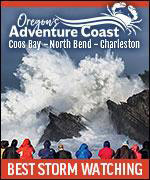 |
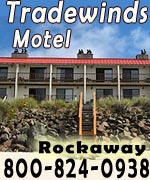 |
RELATED STORIES
Unusual Travel Articles TravelParanormal.com allows you to submit your own creepy tale or debunk one - or see up-to-the-minute news headlines about travel and the paranormal.
Watching Transformations of Oregon Coast Beaches Seasons change and so do beaches, revealing different sides and a variety of eye-popping sights
Staggeringly Cool Ideas for Oregon Coast Romance Be it the season of Valentine's or be it any time of the year, Oregon's coastline has essentially cornered the market for cuddle-inducing possibilities and gushy activities for the hand-holding set
Day or Night Mysteries and Merriment on Oregon Coast It's more than just nightlife that comes to life, but the beaches offer major opportunities
News Headlines from All Over Oregon Need to scan Oregon headlines? Constantly updated news from all over Oregon: a comprehensive, up-to-the-minute display of news headlines from a variety of media.
Secrets of the Season |




